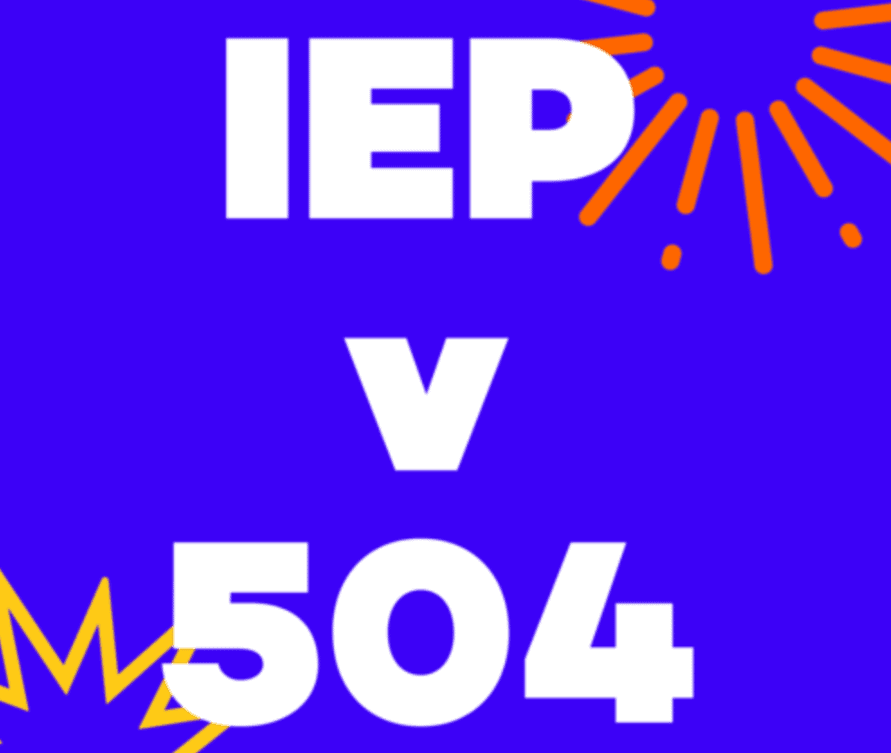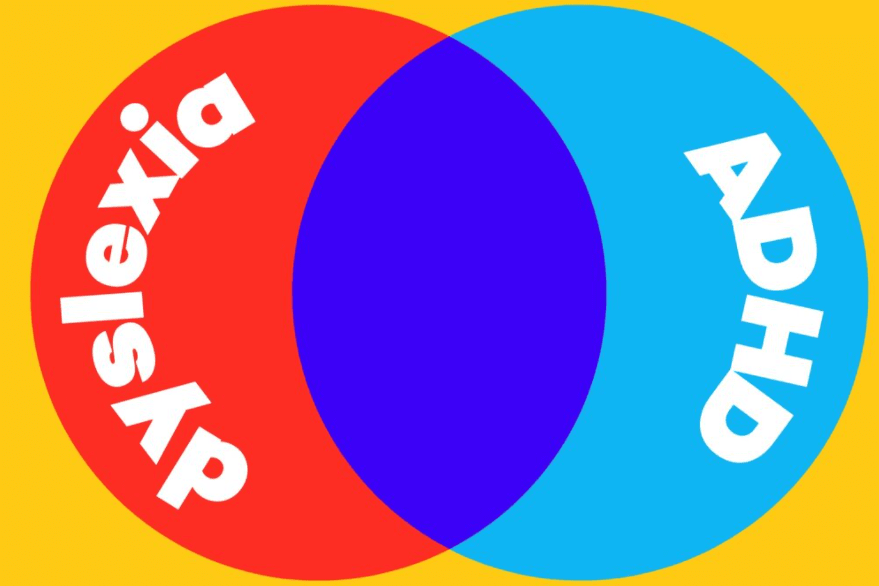
Las diferencias entre un IEP (Plan Educativo Individualizado) y un Plan 504 pueden ser confusos. Pueden contener mucho del mismo contenido y, en última instancia, servir para el mismo propósito. Ambos documentos implementan apoyos formales para ayudar a los estudiantes en la escuela, y ambos requieren el consentimiento de los padres para implementarlos. Ambos también están disponibles sin costo alguno para la familia y, por lo general, ambos se revisan anualmente. Pero también hay algunas diferencias importantes entre los dos documentos.
What is an IEP?
An IEP is a specific legal document that is designed for children with disabilities who need extra help in order to access their education. It’s created by a team of educators, the student’s parents, and other professionals (such as psychologists or speech therapists), and can include changes to curriculum and instruction, accommodations, modifications to testing, and other supports. An IEP is only available to students who have a disability recognized under the Individuals with Disabilities Education Act (IDEA).
What is a 504 Plan?
A 504 Plan is designed for any student who needs extra help in school because of a physical or mental health issue that impairs their ability to learn. Unlike an IEP, a 504 Plan does not include curriculum modifications and instructional changes. It does, however, provide accommodations such as preferential seating, extended time on tests, or the ability to take breaks when needed. This plan is available to any student who has a physical or mental health issue that impairs their ability to access their education.
What Laws Support Them?
One major difference between IEPs and 504s is in the laws that support them. IEPs exist under IDEA (Ley de Educación para Personas con Discapacidades). The law that applies to 504s is Section 504 of the Rehabilitation Act. The former is a federal law ensuring that students with disabilities receive a free and appropriate education that includes the services and supports they need. The latter was the first civil rights law to come into effect protecting people with disabilities from disability-based discrimination.
Who is Eligible?
Para obtener un IEP, un estudiante debe tener uno de 13 discapacidades designadas para poder calificar. Un plan 504 solo requiere que los estudiantes tengan algún tipo de discapacidad diagnosticada.
What are the Contents of Each Document?
Quizás la mayor diferencia es el contenido de los dos documentos. Un IEP está organizado y escrito de una manera muy específica. Entre otras cosas, debe incluir los niveles actuales de desempeño del estudiante, tanto académico como funcional; esto significa cómo le está yendo al estudiante en la escuela con respecto al desempeño académico y partes no académicas de su día. Esta sección también incluye información sobre cómo le está yendo socialmente al estudiante. Dentro de cada sección, hay preguntas e indicaciones específicas que deben responderse, como las fortalezas e intereses académicos del estudiante. Los IEP también contienen metas anuales que deben escribirse de manera muy específica, incluidos puntos de referencia y métodos para medir el progreso. Otra sección del IEP establece qué servicios relacionados recibirá el estudiante, si los hubiere, así como con qué frecuencia y cuándo comenzarán. Un IEP incluye la medida en que los estudiantes participarán en el plan de estudios de educación general y si participarán o estarán exentos de las pruebas estandarizadas.
Un Plan 504 está mucho menos estructurado. Si bien un IEP generalmente sigue una plantilla, no existe un formato estándar para un Plan 504. Por lo general, el plan incluye a los miembros del equipo que trabajan juntos para crear el plan, una descripción de las necesidades del estudiante y una lista de adaptaciones que se implementarán para ese estudiante. Dependiendo de la complejidad de la discapacidad del estudiante, el plan 504 puede variar en complejidad. Es un documento mucho más abierto que un IEP.
Who Provides Funding?
Si bien las escuelas reciben fondos adicionales para todos los estudiantes con un IEP, no reciben fondos adicionales para los estudiantes con planes 504. De hecho, a las escuelas se les pueden quitar los fondos si el gobierno considera que no están sirviendo adecuadamente a los niños con discapacidades en toda la extensión de lo que exige la ley.
La línea de fondo
Si bien los dos documentos son muy diferentes, en última instancia, ambos tienen el mismo propósito, que es brindar a los estudiantes con discapacidades el apoyo que necesitan para tener éxito.
More Frequently Asked Questions
What is the main difference between an IEP & 504 Plan?
IEPs are much more detailed and structured documents than 504 Plans. An IEP contains specific goals and objectives that must be met in order for a student to succeed, and it includes information such as accommodations, related services, and how often the student will participate in the general education curriculum. A 504 Plan is a much more open-ended document that outlines accommodations and other strategies to support a student with a disability.
It is important to remember that both IEPs and 504 Plans are designed to help students with disabilities succeed in school. The most important thing is to make sure that the plan is tailored to the individual student and their needs.
Do IEPs and 504 Plans Serve the Same Purpose?
It is important to remember that while IEPs and 504 Plans are very different documents, they serve the same purpose; to provide students with disabilities the supports they need to succeed. By having an IEP or 504 Plan in place, students will have access to the necessary accommodations and modifications that they need to be successful.
Regardless of which document is used, it is important for parents and educators to work together to ensure that the student’s individual needs are met. This ensures that the student has a comprehensive plan in place to help them reach their potential.
Who can write an IEP or 504 Plan?
IEPs and 504 Plans are created by a team of educators, administrators, parents, and other professionals. The team may also include the student if they are old enough to be involved in the process.
How often do IEPs & 504 Plans need to be updated?
IEPs should generally be reviewed and revised at least once a year. 504 Plans should also be reviewed and updated periodically, but there is not an established timeline for this.
What happens if a student does not meet the goals in their IEP or 504 Plan?
If a student does not reach the goals established in their IEP or 504 Plan, the team can reassess and make changes to reflect how the student is doing. The team should also consider any changes in a student’s disability that may be affecting their academic performance. It is important to remember that IEPs and 504 Plans are living documents that must be regularly adjusted as needed.
How do IEPs & 504 Plans address bullying?
IEPs and 504 Plans can both be used to address issues related to bullying. For example, a 504 Plan may include accommodations for the student such as additional supervision in the hallways or lunchrooms, counseling services, or social skills training. An IEP could also include modifications such as a behavior intervention plan, which outlines strategies for addressing bullying and other challenging behaviors.




